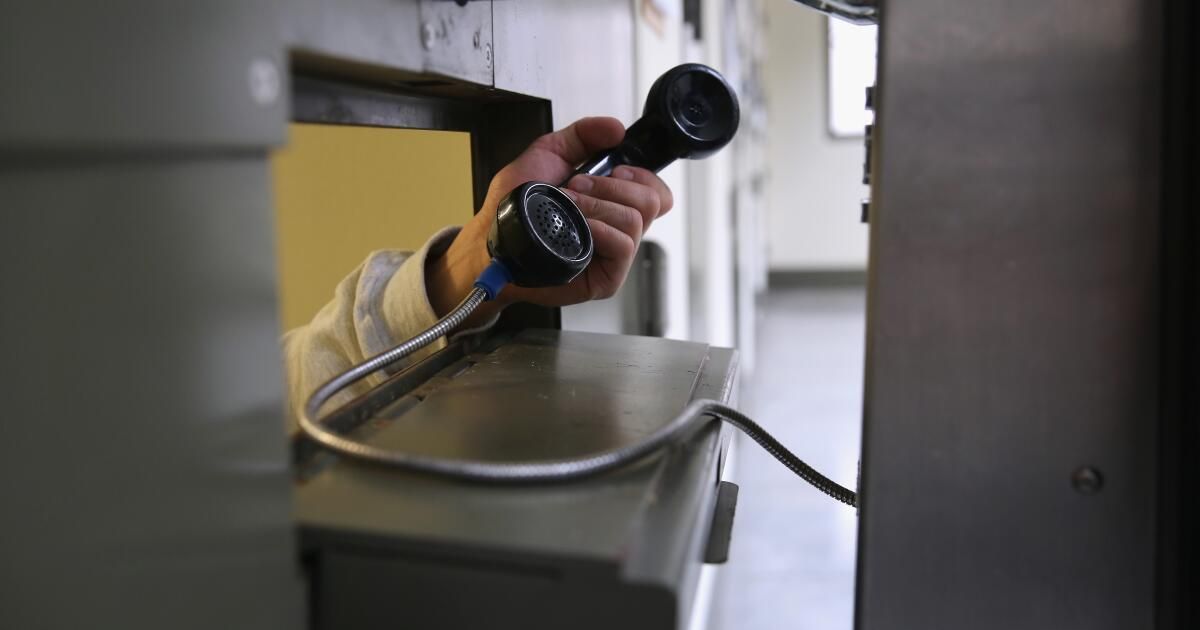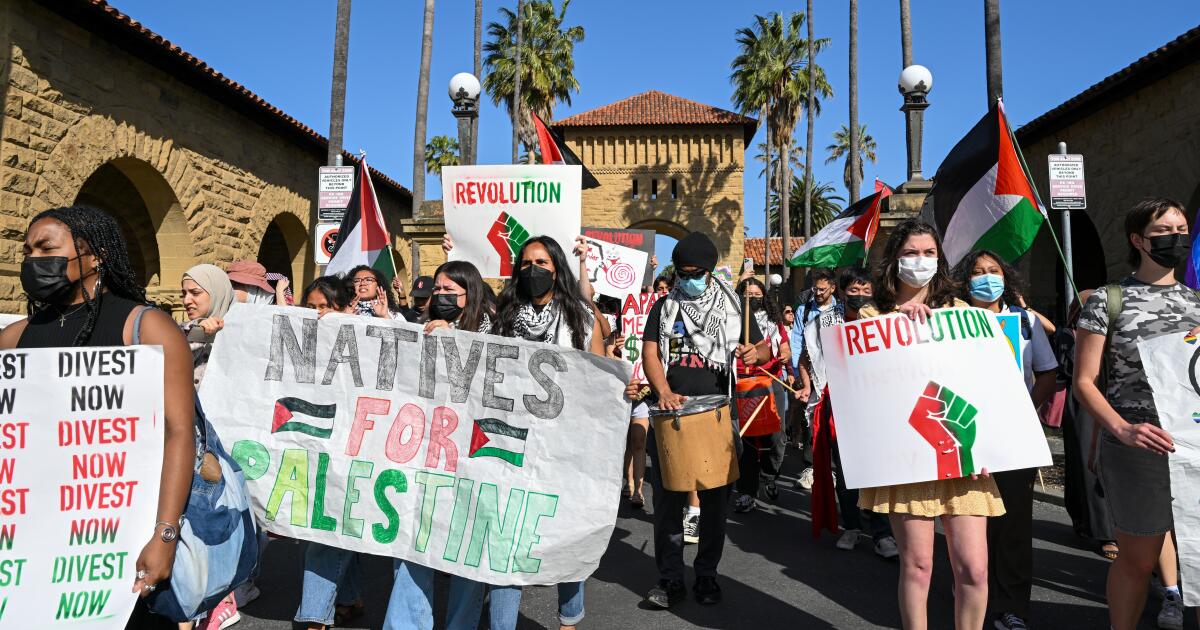U.S. Immigration and Customs Enforcement used solitary confinement in its detention centers more than 14,000 times between 2018 and 2023, including one immigrant detained in California who was held for 759 days, according to a report released Tuesday.
The report found that solitary placements in ICE facilities lasted on average about a month. Almost half exceeded 15 days.
Solitary confinement is used in ICE detention centers as a form of punishment and to protect certain at-risk immigrants.
Human rights groups say the practice is harmful and should be sharply reduced in all U.S. prisons and detention centers. The United Nations has called solitary confinement for more than 15 consecutive days a form of torture.
In recent years, ICE has been criticized by state officials and human rights groups for its reliance on this practice and lack of adequate oversight and monitoring.
The 71-page report, one of the most extensive analyzes to date of ICE's use of solitary confinement, was conducted by researchers from Physicians for Human Rights, Harvard Law School, and Harvard Medical School. . It was based on internal ICE records at 125 detention centers obtained through Freedom of Information Act litigation.
The researchers said ICE's use of solitary confinement and the time periods involved were on track to grow in 2023, although their data was only collected through September 13.
“The harms are so well established that they are incontrovertible,” said Sabrineh Ardalan, director of the Harvard Immigration and Refugee Clinic. “That's why it's shocking that no significant change has been achieved.”
ICE spokesman Mike Alvarez said the agency isolates detainees only after careful consideration of alternatives.
“Administrative segregation placements for special vulnerability should be used only as a last resort,” Alvarez said. “Segregation is never used as a method of retaliation.”
According to the report, about 700 solitary confinement placements lasted at least 90 days and 42 lasted more than a year.
The longest completed solitary confinement case was a Mexican woman detained at the Otay Mesa Detention Center in San Diego for 759 consecutive days through December 2, 2019. Her placement was coded as “requested detainee” and the reasoning was listed as “other,” although the record also showed a disciplinary violation for fighting, said Arevik Avedian, director of empirical research services at Harvard Law School.
Two other cases were longer, but were not included in the report because they were still ongoing at the Northwest ICE Processing Center in Tacoma, Washington, as of September 13, for 817 and 811 days, respectively.
ICE standards generally limit disciplinary isolation to 30 days per violation. But administrative segregation, considered non-punitive and intended for the safety of the detainee, can be indefinite.
ICE did not include the mental health status of isolated immigrants in all records. But of the nearly 8,800 records that did include mental health information, about 40 percent documented mental health conditions.
For people identified as transgender, the average duration of solitary confinement was two months, the researchers said.
Alvarez said ICE does not place detainees in solitary confinement solely because of mental illness unless directed or recommended by medical personnel. Detainees are typically placed there because they are requesting protective custody, as a result of a disciplinary hearing, or to be quarantined if medical accommodation is not available.
Detainees with mental health issues are under the care of medical professionals, he said, and are removed from solitary confinement if they determine it has resulted in a deterioration in their health and a suitable alternative is available.
About 38,500 immigrants were detained by ICE as of Jan. 28, according to TRAC, a nonpartisan research organization at Syracuse University. Two-thirds of those arrested have no criminal record and many others have only minor infractions, such as traffic violations.
ICE has said it is taking steps to reduce the use of solitary confinement over the past decade.
The agency issued a 2013 directive limiting its use, particularly for people with vulnerabilities, such as disabilities or mental illness.
A 2015 memo emphasized the protection of transgender people and specified that solitary confinement “should be used only as a last resort.”
A 2022 directive strengthened protections and reporting requirements for people with mental health conditions in solitary confinement.
Detainees held in solitary confinement are isolated in small cells away from the general population for up to 24 hours a day and have minimal contact with other people. Prolonged isolation is known to cause adverse health effects, including the risk of suicide and brain damage.
In California, Governor Gavin Newsom vetoed a 2022 bill that would have regulated and significantly reduced solitary confinement in jails, prisons and ICE facilities.
Watchdog reports have repeatedly identified flaws in ICE's approach and oversight of solitary confinement.
In 2021, the California Department of Justice issued a review of ICE detention in the state, with a comprehensive look at three private facilities. Cal DOJ found little distinction between the conditions of detainees in administrative isolation and those detained for disciplinary reasons. The agency also found that mentally ill detainees were being held in solitary confinement even though isolation worsened their conditions.
“Most segregation detainees are in their cells for 22 hours a day and when allowed to leave they generally recreate in individual cages,” the California report states.
The same year, a report from the Department of Homeland Security's Office of Inspector General found that ICE did not consistently meet reporting requirements for solitary confinement. Investigators analyzed records from fiscal years 2015 to 2019 and found that ICE had not maintained evidence showing that it considered alternatives to solitary confinement in 72% of solitary confinement placements.
Citing that report, Democratic senators, including the late Dianne Feinstein and Sen. Alex Padilla of California, pressed ICE leaders about the agency's “excessive and seemingly indiscriminate use of solitary confinement,” calling it a problem. of long standing.
A 2022 report from the U.S. Government Accountability Office found that information about detainees' vulnerabilities and explanations for what led to their placement in solitary confinement were inconsistent. The GAO analyzed solitary confinement placements from 2017 to 2021 and found that about 40% were for disciplinary reasons and 60% were for administrative reasons, such as protective custody.
ICE says facility staff must offer people in administrative segregation the same privileges as those in general housing, including recreation, visitation, access to the law library and telephones. They could also spend more time outside of isolation socializing or doing voluntary work tasks such as cleaning. Privileges for those in disciplinary segregation vary depending on the amount of supervision required.
But two dozen former detainees interviewed by the report's authors described having limited or no access to phone calls, recreation, medical care and medication.
Karim Golding, 39, of Jamaica, was detained by ICE from 2016 to 2021. At the Etowah County Detention Center in Alabama, which ICE stopped using in 2022 due to its “long history of serious deficiencies,” Golding He said he spent almost two months in prison. solitary confinement after testing positive for COVID-19. He now lives in New York.
Golding said that during the height of the pandemic, when the facility allowed in busloads of new detainees without following proper distancing or isolation guidelines, he urged staff to conduct testing. He and other detainees filed dozens of sick calls requesting testing.
When staff finally complied, he and several others were placed in isolation after testing positive for the coronavirus. He said he believes the move was retaliatory.
Golding remembers sometimes spending 40 hours at a time in his dingy 8×10-foot cell with holes in the concrete walls and no access to a shower. The isolation was very lonely, she recalled.
“I went to sleep one night and woke up suffocating in the cell,” he said. “I started crying because there was no panic button inside these cells. “There was no officer or anything that could help.”
Two other detainees contacted by The Times said they were held in solitary confinement in facilities in Texas and Louisiana for several days while on hunger strike.
As a candidate, President Biden pledged to end the use of solitary confinement in federal prisons. He signed an executive order in 2022 promising to ensure that incarcerated people are “free from prolonged segregation.”
The authors of Tuesday's report called on Biden to phase out the use of solitary confinement in immigration detention centers.
“There is still time,” Ardalan said. “This is a legacy I could leave from his administration.”












